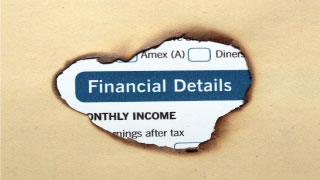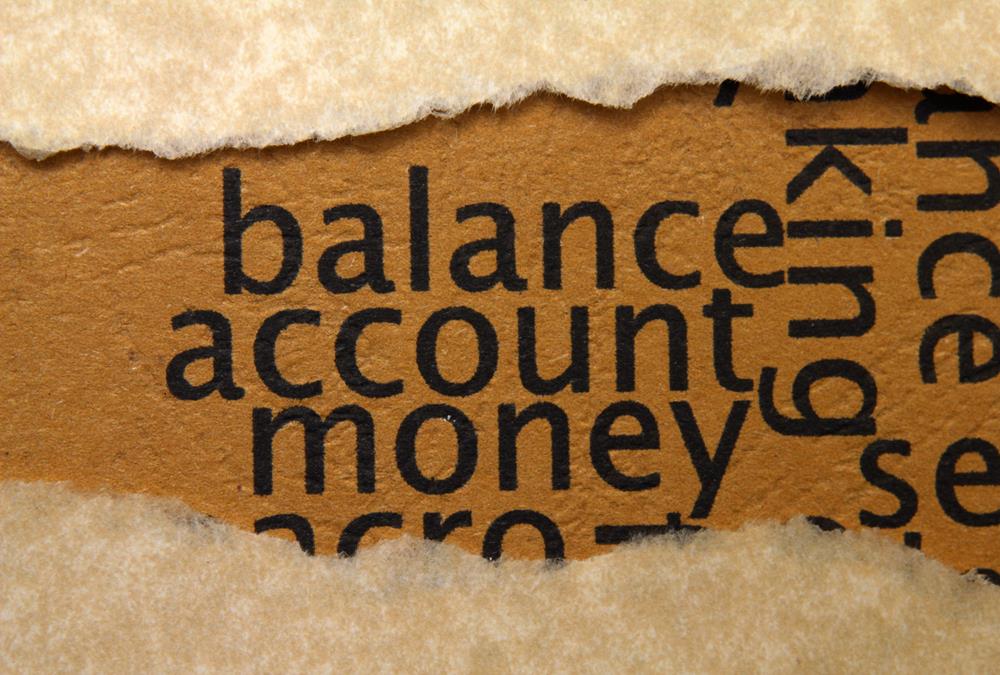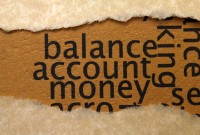- Home
- Business Processes
- Industry Knowledge
- Aerospace Industry
- Automotive Industry
- Banking Domain
- BFSI Industry
- Consumer/ FMCG Industry
- Chemicals Industry
- Engineering & Construction
- Energy Industry
- Education Domain
- Finance Domain
- Hospitality Domain
- Healthcare Industry
- Insurance Domain
- Retail Industry
- Travel and Tourism Domain
- Telecom Industry
- Leadership Skills
- eLearning
- Home
- Industry Knowledge
- Banking Domain
- Banking Industry Value Chain: Decoding Bank's Balance sheet
Banking Industry Value Chain: Decoding Bank's Balance sheet
Banking is a unique business and banks are a very important institution to the efficient functioning of the financial system. What are the various components of the banks balance sheet? What are the different assets and liabilities in their balance sheet? Deposits are assets for anyone investing it, but how deposits accepted by a bank are represented in Bank's balance sheet? Explore answers to these questions and understand the significance of items that are generally part of the balance sheet of a commercial bank. Understand the business model of commercial banking from an accountant’s perspective.
As we have discussed in the earlier article that commercial banking is a business and banks play a role by providing a service and they earn a profit by charging customers for that service. The key commercial banking activities are taking in deposits from savers and making loans to households and firms. We also discussed how the bank makes profits by receiving funds from depositors and giving them on higher interest to the borrowers. In this article, we will look at the balance sheet items of commercial banks; will explain the items that come under bank’s sources of funds and the items where these funds may be applied. And finally how these items are summarized on its balance sheet.
The Bank Balance Sheet
 A balance sheet is a statement that shows an individual’s or a firm’s financial position on a particular day. Learn more about Balance Sheet under General Ledger Tutorials. Balance sheet sheets show monetary values for each entry expressed in terms of currency of the market in which bank is registered. The typical layout of a balance sheet has liabilities on one site and assets shown on the other side and is based on the following accounting equation:
A balance sheet is a statement that shows an individual’s or a firm’s financial position on a particular day. Learn more about Balance Sheet under General Ledger Tutorials. Balance sheet sheets show monetary values for each entry expressed in terms of currency of the market in which bank is registered. The typical layout of a balance sheet has liabilities on one site and assets shown on the other side and is based on the following accounting equation:
Assets = Liabilities + Shareholders’ equity
The accounting equation tells us that the left side of a firm’s balance sheet must always have the same value as the right side. We can think of a bank’s liabilities and its capital as the sources of its funds, and we can think of a bank’s assets as the uses of its funds.
The Banks Equity:
 Shareholders’ equity is the difference between the value of a firm’s assets and the value of its liabilities. Bank capital, also called shareholders’ equity, or bank net worth, is the difference between the value of a bank’s assets and the value of its liabilities. Shareholders’ equity represents the dollar amount the owners of the firm would be left with if the firm were to be closed, its assets sold, and its liabilities paid off. For a public firm, the owners are the shareholders. Shareholders’ equity is also referred to as the firm’s net worth. In banking, shareholders’ equity is usually called bank capital. Bank capital is the funds contributed by the shareholders through their purchases of the bank’s stock plus the bank’s accumulated, retained profits.
Shareholders’ equity is the difference between the value of a firm’s assets and the value of its liabilities. Bank capital, also called shareholders’ equity, or bank net worth, is the difference between the value of a bank’s assets and the value of its liabilities. Shareholders’ equity represents the dollar amount the owners of the firm would be left with if the firm were to be closed, its assets sold, and its liabilities paid off. For a public firm, the owners are the shareholders. Shareholders’ equity is also referred to as the firm’s net worth. In banking, shareholders’ equity is usually called bank capital. Bank capital is the funds contributed by the shareholders through their purchases of the bank’s stock plus the bank’s accumulated, retained profits.
The Banks Liabilities:
 A liability is something that an individual or a firm owes, or, in other words, a claim on an individual or a firm. A liability, in financial terms, is a cash obligation. The most important bank liabilities are the funds a bank acquires from savers. Have you ever wondered if these deposits a form of bank income? Actually not, as the money received as deposits, does not really belong to the bank. For banks, deposits are liabilities. Depositors have the right to request their funds, and the bank must pay them. The bank is liable to pay this money back to the depositors on demand. The bank uses the funds to makes investments or loans to borrowers. Banks offer a variety of deposit accounts because savers have different needs. Money the bank borrowed is also a liability, a debt to be paid.
A liability is something that an individual or a firm owes, or, in other words, a claim on an individual or a firm. A liability, in financial terms, is a cash obligation. The most important bank liabilities are the funds a bank acquires from savers. Have you ever wondered if these deposits a form of bank income? Actually not, as the money received as deposits, does not really belong to the bank. For banks, deposits are liabilities. Depositors have the right to request their funds, and the bank must pay them. The bank is liable to pay this money back to the depositors on demand. The bank uses the funds to makes investments or loans to borrowers. Banks offer a variety of deposit accounts because savers have different needs. Money the bank borrowed is also a liability, a debt to be paid.
Note: You may not like to think of your savings account as a problem for the bank, but it is one in theory. As explained below, all the deposits are payable on demand, means, depositors can ask for payback of their money at any time and if depositors simultaneously want all their money from all their accounts, banks would be in trouble. In such a case, the bank must either break its promise to depositors or pay until its reserves are gone. If the bank fails, unpaid depositors lose their money. The bank's liquidity depends on this principle and is based on the assumption that depositors will not demand their money quickly. A bank's liabilities exceed its reserves. The money is loaned out, and the reserves do not match the total of deposits (liabilities). However, the money is out working, financing businesses and expanding the economy.
The Bank Assets:
 An asset is anything of value. An asset is something of value that an individual or a firm owns. In financial terms, that usually means money. A liquid asset is anything that can readily be exchanged, like cash. A bank's assets are its loans and investments, which may be less liquid by contract than deposits. Deposits may have to be returned any time, but assets can arrive in small amounts over a long period. Banks, like people and other corporations, make money on investments. They invest in stock markets and some types of securities and government bonds. While investing their money in instruments other than government bonds, they face the same risks as other investors. They hire professional investment staff to maximize their return on investments. Investments are assets for the banks.
An asset is anything of value. An asset is something of value that an individual or a firm owns. In financial terms, that usually means money. A liquid asset is anything that can readily be exchanged, like cash. A bank's assets are its loans and investments, which may be less liquid by contract than deposits. Deposits may have to be returned any time, but assets can arrive in small amounts over a long period. Banks, like people and other corporations, make money on investments. They invest in stock markets and some types of securities and government bonds. While investing their money in instruments other than government bonds, they face the same risks as other investors. They hire professional investment staff to maximize their return on investments. Investments are assets for the banks.
A bank's liabilities are more liquid than its assets. A bank must give depositors their money if they request it. The bank's assets, however, may be less liquid because they are tied up in longer-term loans or investments, so the bank cannot get them as quickly.

Banking Domain Knowledge - Resources
Related Links
You May Also Like
-
Definition of Bank: Meaning of the term Bank and the Business of Banking
What do we mean by the word bank? How did the word bank originate? What is the most simple and concise definition of a bank that explains the fundamentals of the banking process? Does the definition of banking vary from country to country? What are the key differentiators between any other business and a Bank? Get answers to all these questions and explore the basics of bank and banking as an industry.
-
History of Banking: Evolution of Banking as an Industry
Banking is one of the oldest industries and banking in the form that we know of began at about 2000BC of the ancient world. It started with merchants making grain loans to farmers and traders while carrying goods between cities. Since then, the banking industry has evolved from a simplistic barter system and gift economies of earlier times to modern complex, globalized, technology-driven, and internet-based e-banking model. In this article, we will take you through the major events and developments in the history of the banking industry.
-
History of Banking: Famous Banks from the Past
Seven hundred years ago a bank was established in Venice, which made transactions resembling modern banking. In 1407, another bank was founded in Italy under the name of Banco di San Giorgio which was one of the oldest chartered banks in Europe. Sveriges Riksbank (Riksbanken), is the central bank of Sweden and the world's oldest central bank. The Bank of England is the second oldest central bank in the world, and most modern central banks have been based on that model. Let us explore some interesting events as we learn more about these early banking institutions.
-
History of Banking: The Gold Standard & Fractional Reserve Banking
Gold has always been considered as a safe economic investment and treated like a currency. All of the economically advanced countries of the world were on the gold standard for a relatively brief time. Under a gold standard, the value of a unit of currency, such as a dollar, is defined in terms of a fixed weight of gold and banknotes or other paper money are convertible into gold accordingly. Explore the fascinating history of the gold standard through the lens of history and also learn why banks hold back a certain fraction of deposits as reserves.
-
Overview of Banking Industry: The Industry Basics
Banks play a key role in the entire financial system by mobilizing deposits from households spread across the nation and making these funds available for investment, either by lending or buying securities. Today the banking industry has become an integral part of any nation’s economic progress and is critical for the financial wellbeing of individuals, businesses, nations, and the entire globe. In this article, we will provide an overview of key industry concepts, main sectors, and key aspects of the banking industry’s business model and trends.
-
Banking Sector, Segments & It's Classifications
The banking industry players deal in a variety of products from savings accounts to loans and mortgages, offer various services from check cashing to underwriting, caters to different types of customers from individuals to large corporates, serve diverse geographies from rural villages to cross-border operations. Thus the banking industry is made up of several types of banks, with their own objectives, roles, and functions. In this article, we will explore the various sectors, segments, and classifications of banking based on parameters like products, customers, types, etc.
-
Type of Banks: Different Types of Banks in India & their Functions
This article explains the banking structure in India and how different banks are classified as per RBI Norms. The Indian banking industry has been divided into two parts, organized and unorganized sectors. The organized sector consists of Reserve Bank of India, Commercial Banks and Co-operative Banks, and Specialized Financial Institutions (IDBI, ICICI, IFC, etc.). The unorganized sector, which is not homogeneous, is largely made up of money lenders and indigenous bankers. Learn what we mean by nationalized banks, scheduled banks, public sector banks, private banks, and foreign banks.
-
Types of Banks: Different Banks & their Classifications (Global)
The banking industry caters to various sections of society thus the focus of banking becomes varied, catering to the diverse needs of clients through different products, services, and methods. To meet this, we need distinctive kinds of banks addressing complex business & social needs. In this article, we will explain various types of banking institutions ranging from retail banks, commercial banks, co-operative banks, investment banks, central banks to various other types of specialized banks.
-
Banking Operations: Understanding Various Transactions & Activities
Banks perform a variety of operations ranging from basic or primary functions like day to day transactions at a branch to others that maybe the agency or general utility services in nature. The transactions that are incidental to revenue/sales or sustaining the business are an important element of the banking industry value chain. In this article, we will look at the key operations performed in the course of banking.
-
Banking Industry Business Model - Understanding How the Banking System Works
Banks are commercial profitable institutions and need to increase their business, grow their revenue, and provide returns to their owners. Unlike other stores and shops, banks are providing services rather than selling their products. Learn how banks get their funds and how they make money on services. Read more to learn how the banks earn their profit!
Explore Our Free Training Articles or
Sign Up to Start With Our eLearning Courses

About Us
Learning
© 2023 TechnoFunc, All Rights Reserved










